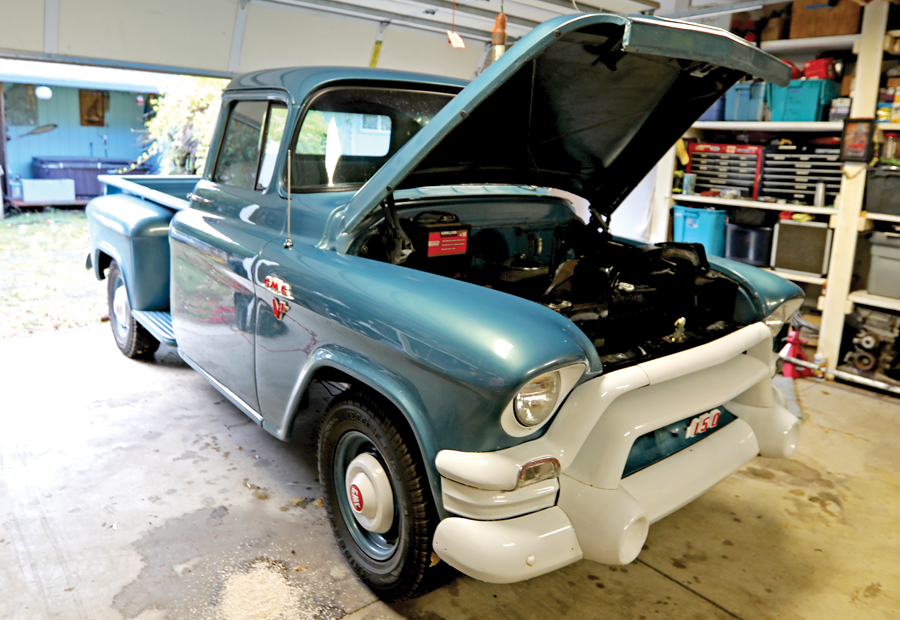
ACC Contributor Jeff Zurschmeide bought a new-to-him 1956 GMC pickup a few months back. The truck looks great and is mostly stock, aside from a 350 V8 swap. But when the previous owner installed the engine, he used rubber line and a plastic filter to run fuel from the block-mounted pump to the carburetor inlet. It’s exactly the setup you’ll see on many classic cars today.
Once upon a time, this sort of thing was not a big deal. But today’s pump fuels have more ethanol in them than ever, and that ethanol has a tendency to break down rubber hose over time, turning it hard and brittle. Using standard rubber fuel line on the pressure side of a fuel system just isn’t a great idea these days — especially if your car runs pump gas.
Why? Simple. If that broken-down fuel line splits and starts to leak gas on the pressure side, especially over the top of a hot exhaust manifold, you’ll have a fire.
There are better options out there to get gas up to the carburetor, using slick, reusable parts that just so happen to look better than a rubber line and plastic filter.
Since Jeff isn’t concerned about keeping his truck 100% original, we opted to use bulk steel line, AN-style fittings, and a modern Edelbrock AN-style reusable fuel filter, all sourced from Summit Racing. Here’s how we upgraded Jeff’s fuel-delivery system while also making it safer and better looking.
Summit Racing Parts List (summitracing.com)
- P/N SUM-220665B, carb fitting for Edelbrock Performer Series, 5/8-20 to -6 AN, $4.99
- P/N SUM-220633-2B, -6 AN tube nuts (two per pack), $2.99 each (two packs)
- P/N SUM-220634-2B, -6 AN tube sleeves (two per pack), $1.99 each (two packs)
- P/N EDL-8129, Edelbrock polished fuel filter, -6 inlet/outlet, $32.95
- P/N EAR-961947ERL, inverse flare 3/8-inch to -6 AN fitting, $10.92
- P/N EAR-AT921106ERL, 90-degree -6 AN male-to-female fitting, $16.20 each (2 required)
Other Parts and tools
- Edelmann P/N 3600ST 3/8-inch steel brake line, $27
- Ridgid 37-degree flare tool, Model 377, $110
- Pipe cutter and reamer, $15
Time spent: One hour
Difficulty: 1/5
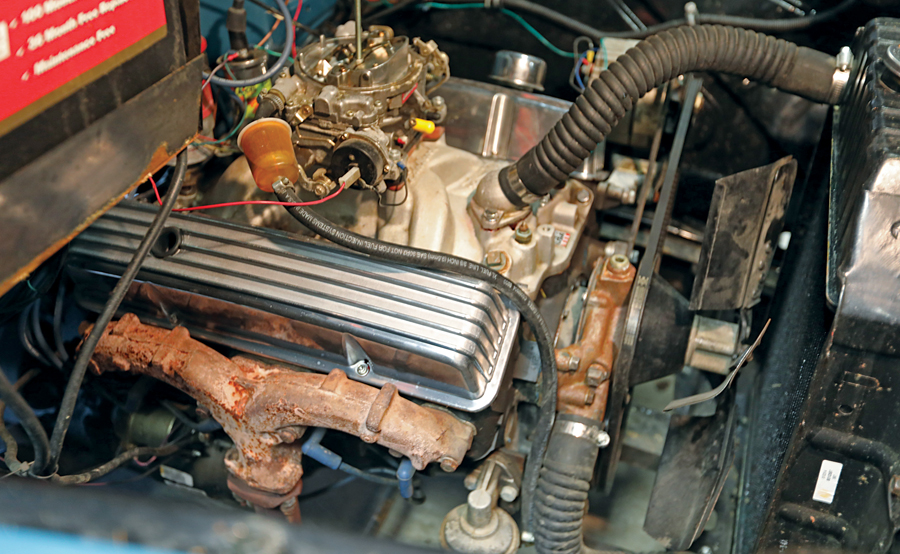
- The fuel line on this small-block Chevrolet got the job done, but today’s fuels are caustic enough to cause this to fail — and you won’t really know how long you have until it hardens, cracks and leaks raw fuel on your hot exhaust manifold. The smarter choice is to eliminate this type of line and filter on the pressure side and go with steel lines and a better-quality filter.
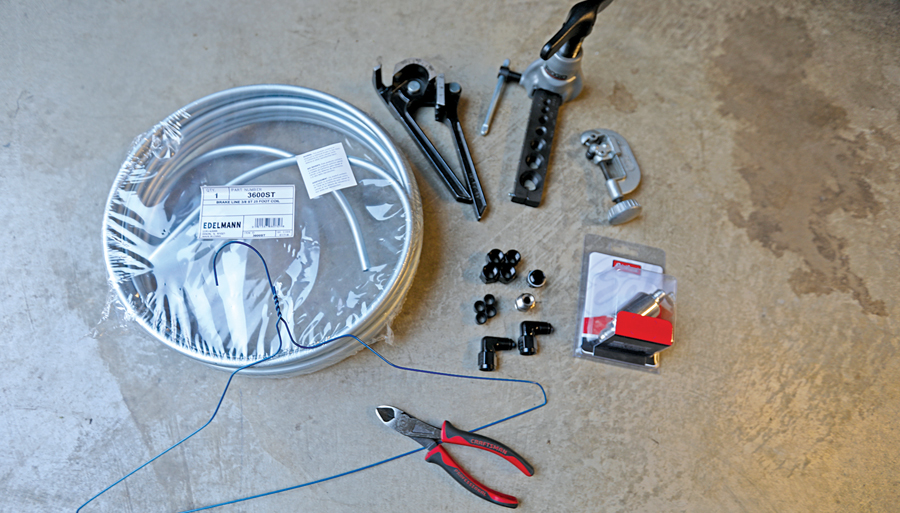
- It doesn’t take much to tackle this job, other than a few fittings, some steel line, a new filter, a wire coat hanger for mockup, and a good-quality flare tool such as Ridgid’s Model Number 377. You can find just about everything you need from summitracing.com, and the flare tool is available online and at a number of home-improvement stores as well — it’s typically used to make lines for plumbing and a/c work around the house.
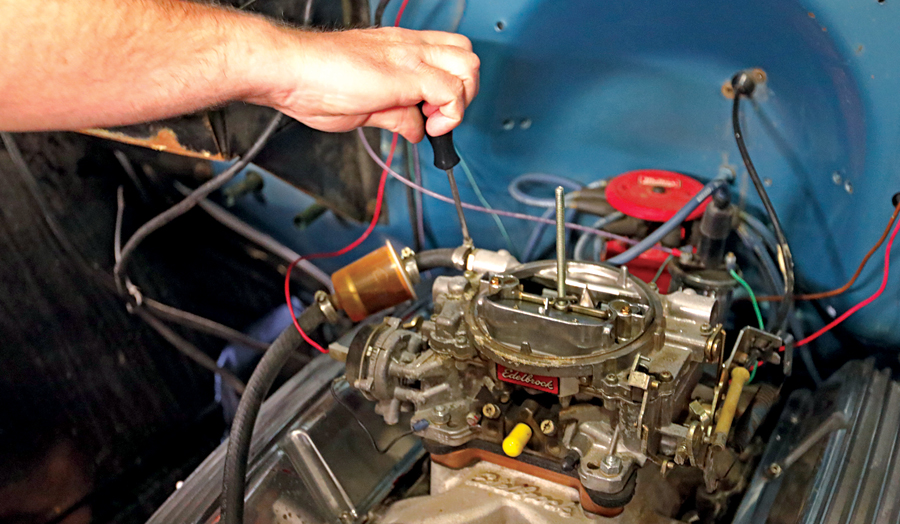
- The first step, after disconnecting the battery, is to remove the fuel line routed from the pump to the carburetor. If the vehicle has been running recently, this line will contain pressurized fuel, so be ready with a shop rag once it’s loose.
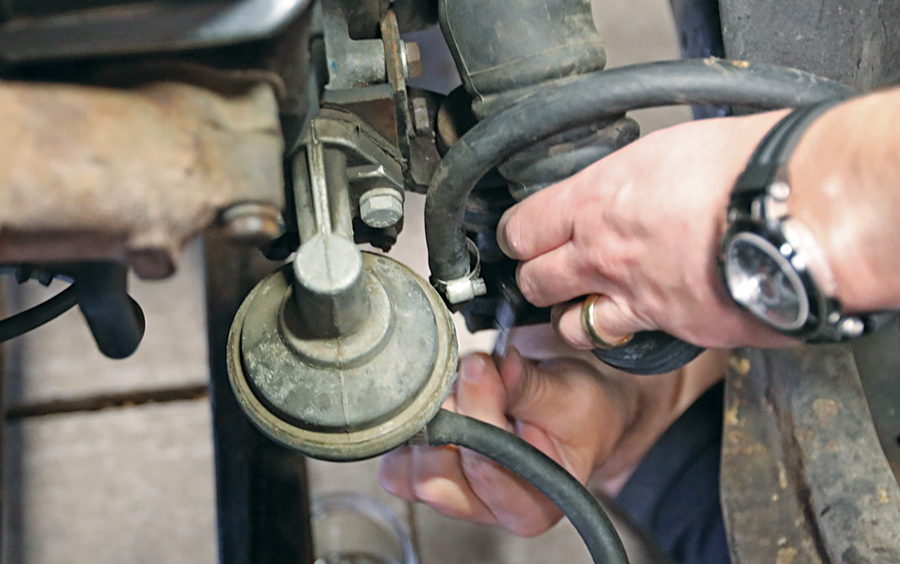
- With the upper section of line loose, we moved down to the fuel-pump output fitting, which is a 3/8-inch inverse-flare design. Unfortunately, this is a low area of the fuel system, and if there’s a good amount of fuel in the tank, you’ll likely end up with a running stream of fuel out of this location. We simply took a shop rag and a small pair of vise-grips and used both to gently pinch off the supply line that ran into the other side of the fuel pump. This is a good time to replace this line as well, but it needs to be flexible to account for engine motion.
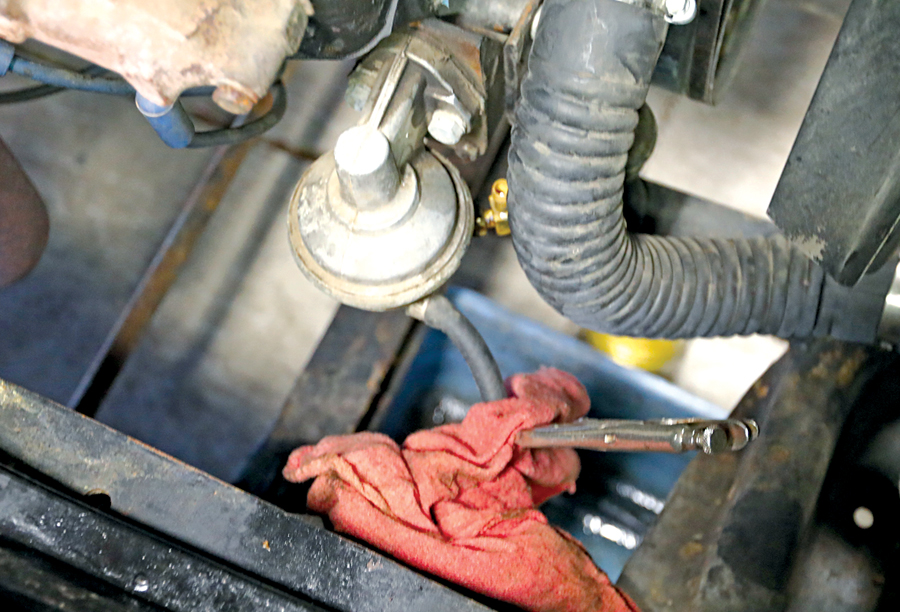
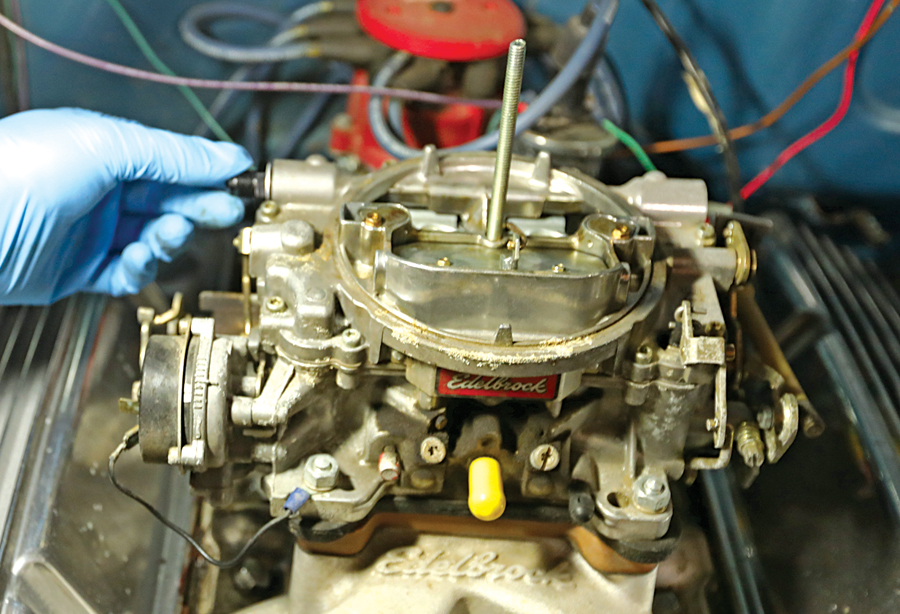
- With the fuel lines removed, it’s time to change the feed fitting on the carburetor. The standard barb-end fitting is fine for rubber line, but that won’t work with a steel hard line. Summit’s 5/8 by 20 to -6 adapter is perfect for this application, and it comes with a new sealing washer, too.
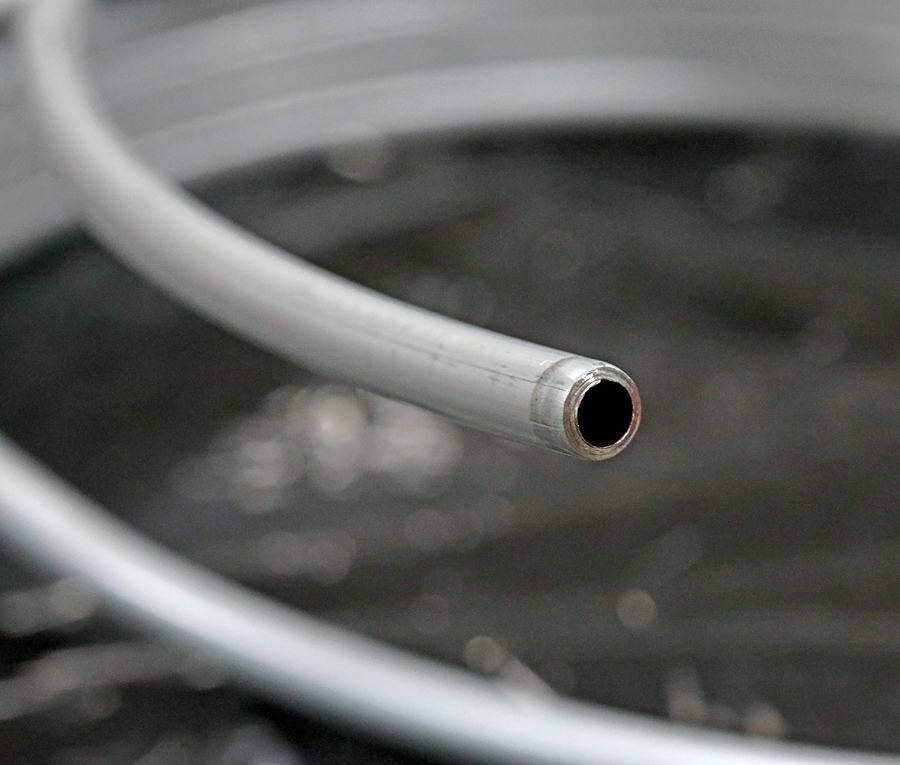
- Edelmann’s 3600ST isn’t actually 3/8-inch fuel line. It’s 3/8-inch brake line. That’s important here, as AN-style flares are 37 degrees (as opposed to a standard 45-degree flare) and aren’t double flares like you might see on an OEM application. As such, a standard straight-welded tube may very well leak at the flare, as the seam where the tube was constructed becomes part of the face of the flare. Spiral-core brake line is rated for much higher PSI than fuel line, doesn’t have that straight seam, and as such is much more reliable for this sort of task. This part number, for $27, is a 25-foot spool, which allows for a lot of mistakes and remainder for other projects. 3/8 line translates to -6 AN components.
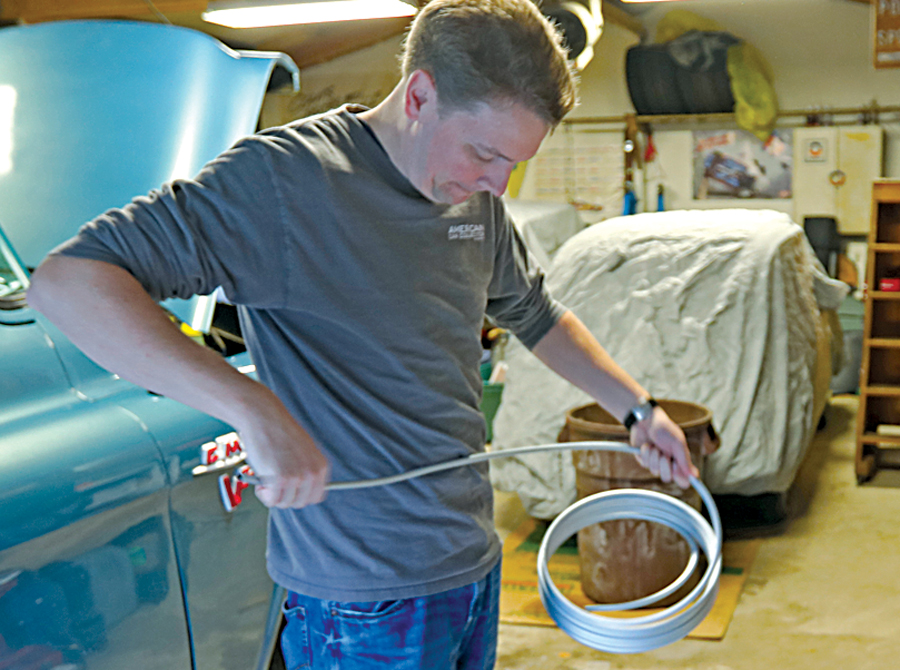
- Unwinding the spool may look like a chore, but this line is actually fairly pliable and easy to work with. After roughing out about how much fuel line was needed, we marked it and cut it off using a pipe cutter.
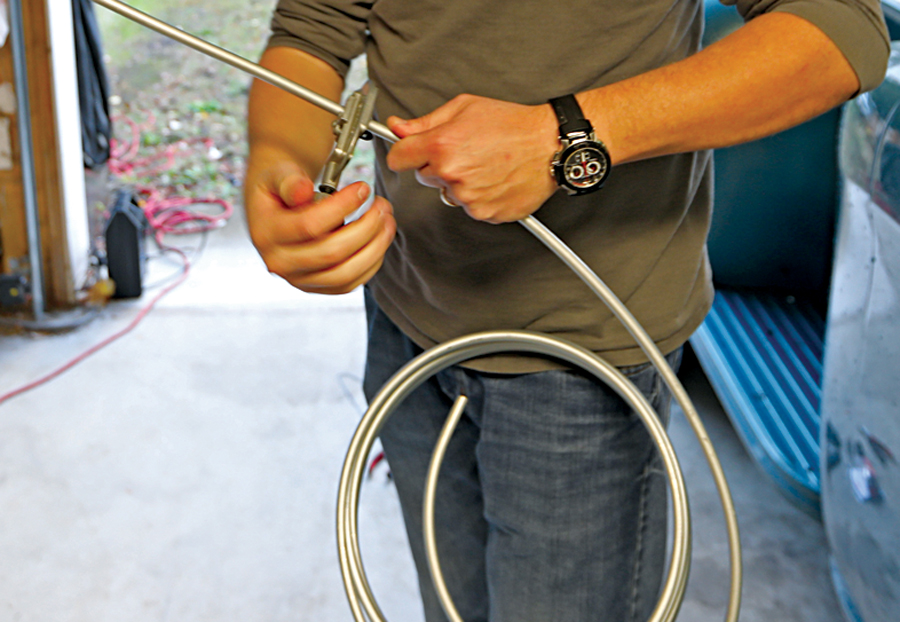
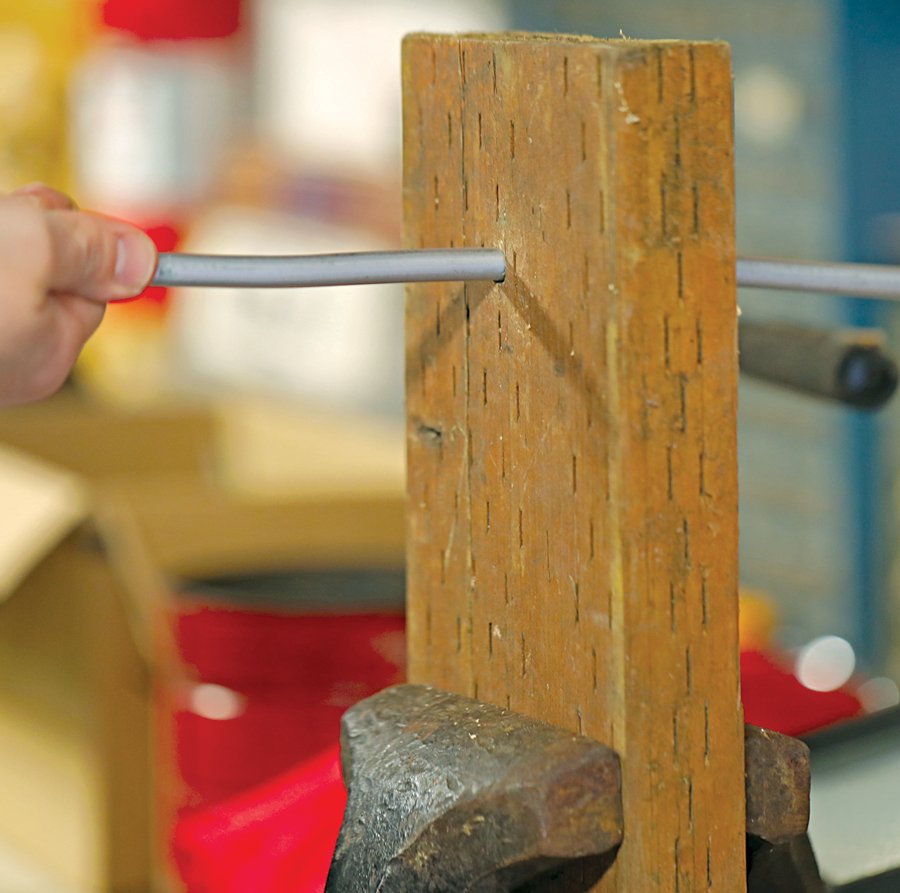
- Quick tip: Steel fuel line, especially if it’s from a roll, can be tough to get perfectly straight. A low-buck solution? Take a 2×4 or 2×6 hunk of wood, drill a hole in it that’s slightly larger than the tube diameter, and then chuck that board up in a vise. You can use it to help work your line straight. For longer sections, a 4×4 works well — just insert the tube in one end and pull it out the other. The wood will straighten out the tube as it passes through.
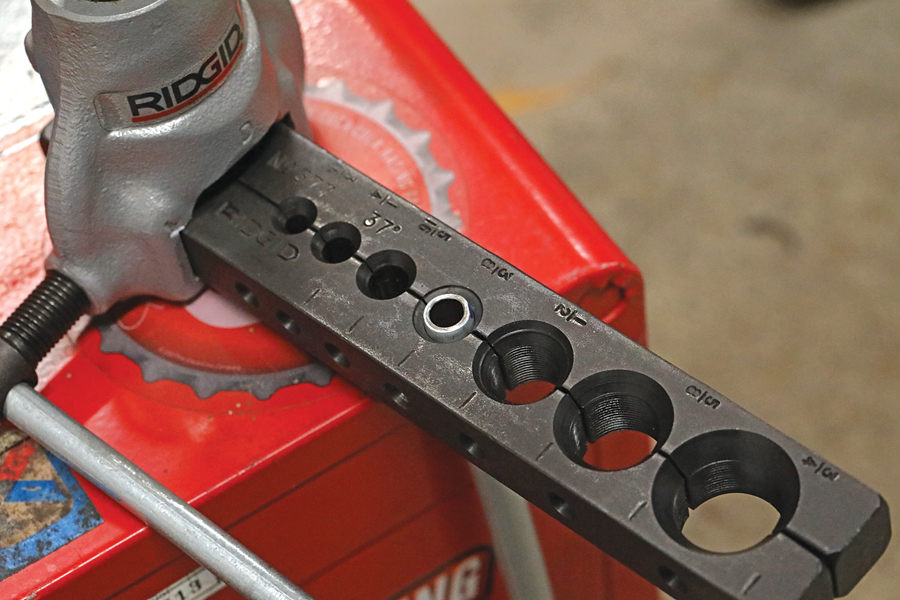
- The 377 flare tool uses an eccentric cone to roll the tubing into the 37-degree form. Simply insert it flush with the top of the form, slide the tool into place, tighten it down and turn the handle until it clicks. The end result is a perfect 37-degree flare.
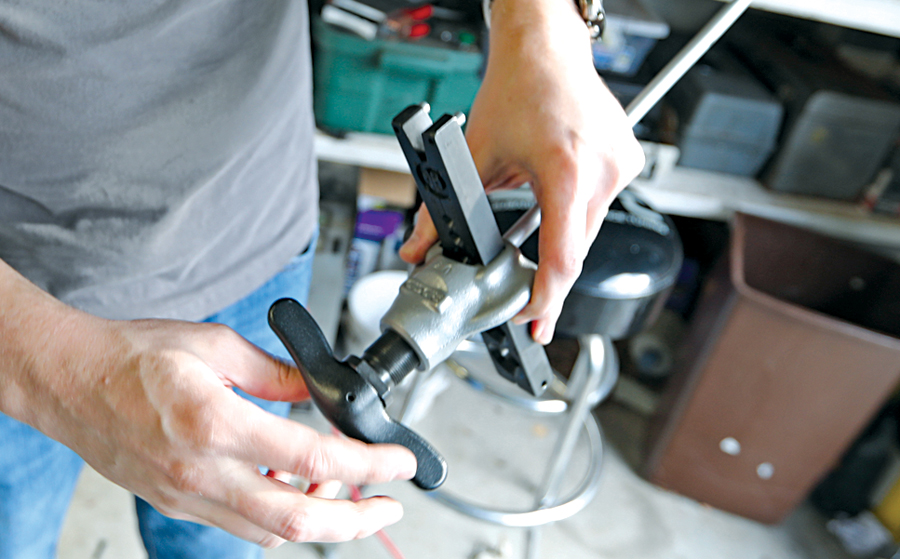
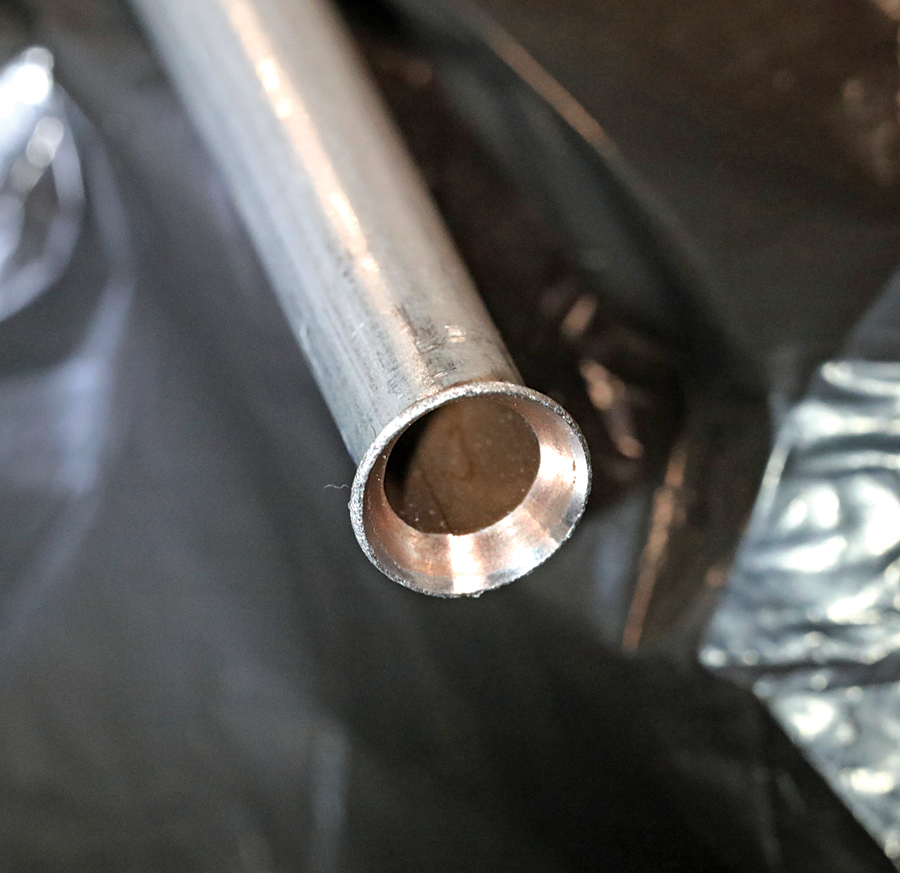
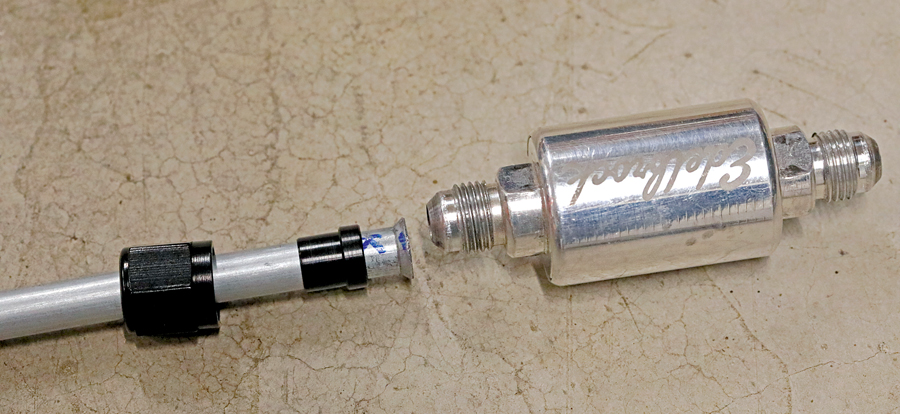
- The single flare works here thanks to the tube sleeve and tube nut. The sleeve is also beveled at 37 degrees, which matches the flare in the tube and supports it from behind. The tube nut slides up from behind both and sandwiches the sleeve, flare, and -6 AN fitting together, creating a seal that’s good enough for even higher-psi fuel-injection applications.
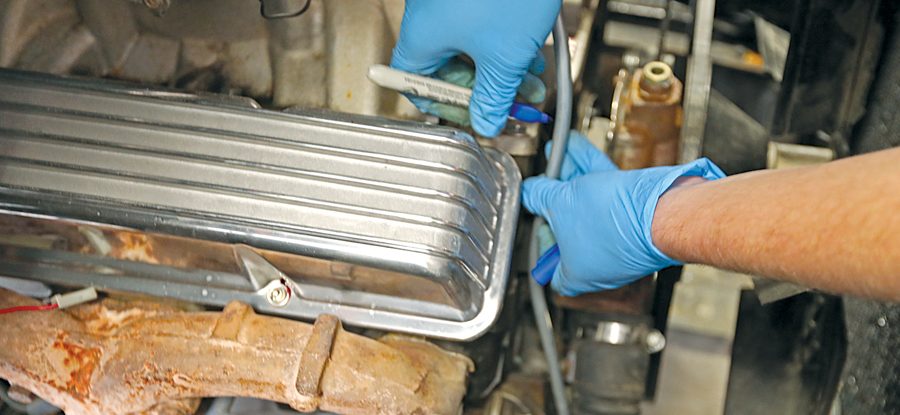
- We installed the 3/8 inverse flare to -6 AN fitting in the fuel-pump output and threaded a 90-degree AN fitting to it, which allowed us to thread our straight section of flared tube directly to the fuel pump. We then bent it by hand to clear the radiator hose and follow the contour of the cylinder head. Then, using a Sharpie, we marked where to start a 90-degree bend.
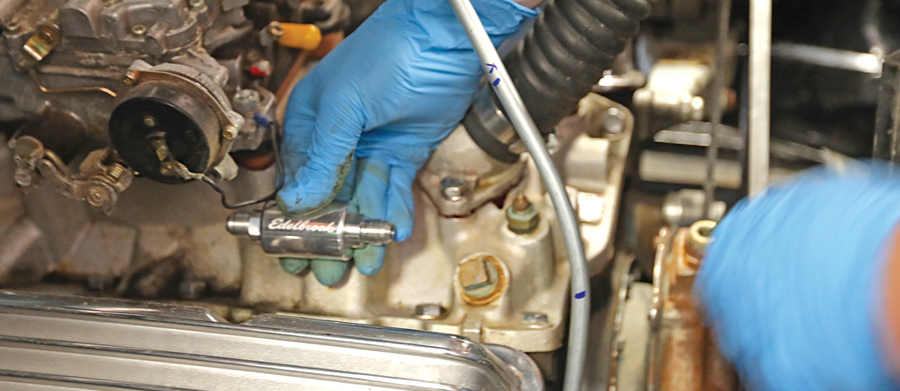
- Edelbrock’s 8129 fuel filter is perfect for a carbureted application using -6 fittings, and it’s easily disassembled and cleaned, so it’ll last the life of your car. Here we’ve mocked up where we want it in relation to the carburetor, which helps to dictate how much bend we need in the steel line.
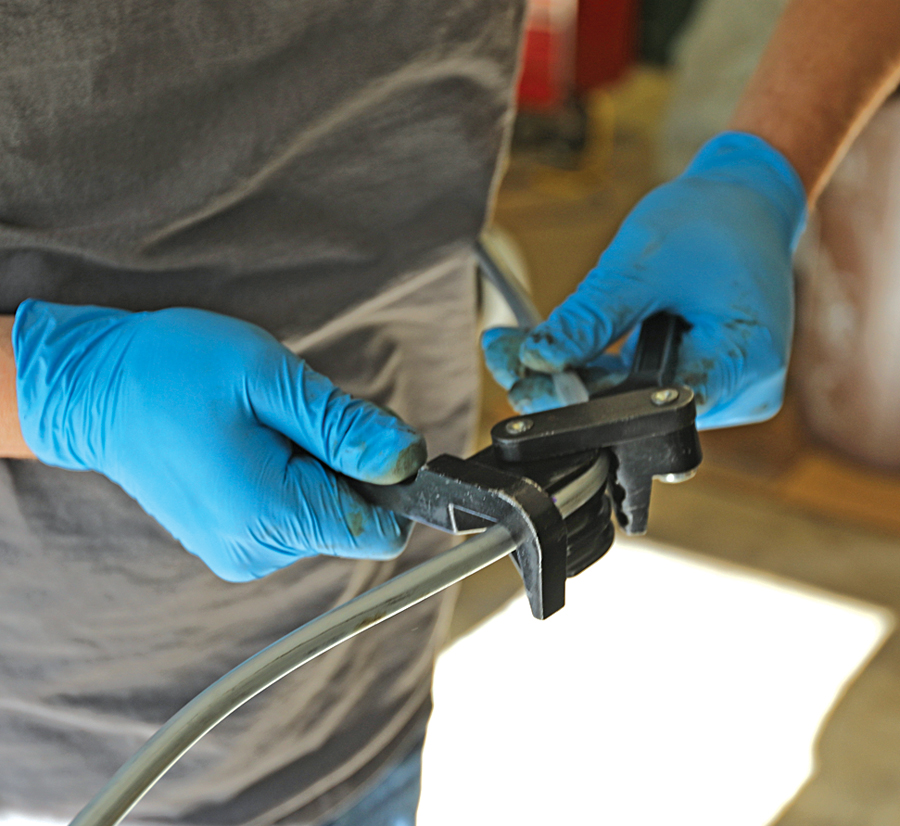
- With the tube removed from the car, we proceeded to bend it approximately 90 degrees using a pipe bender, and then cut it to length at approximately where we wanted the filter to be. Then we test fit it again.
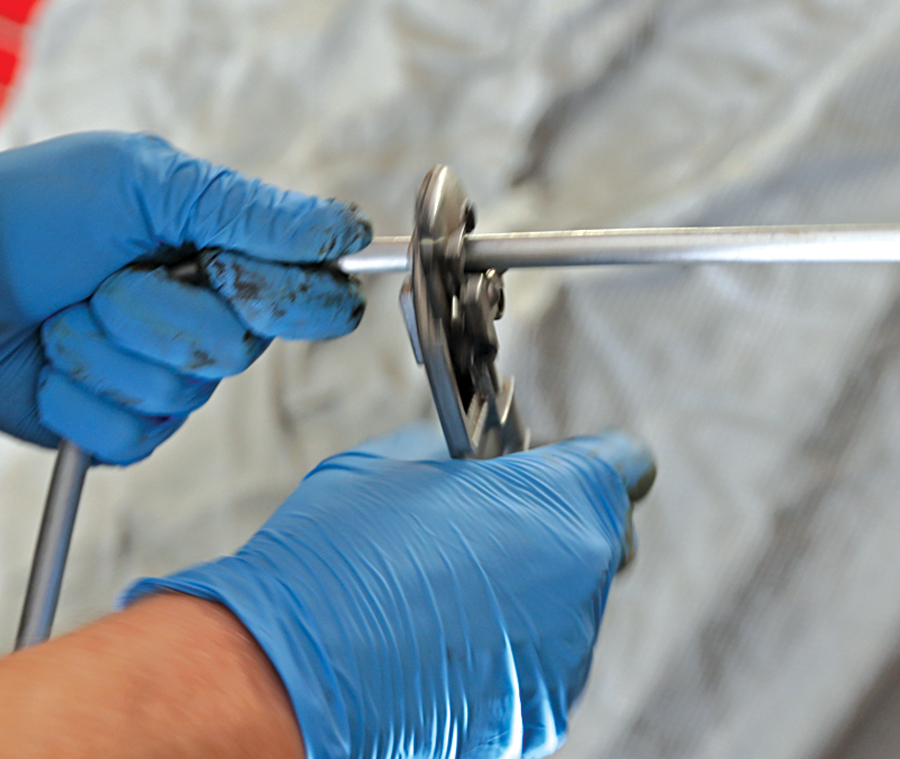
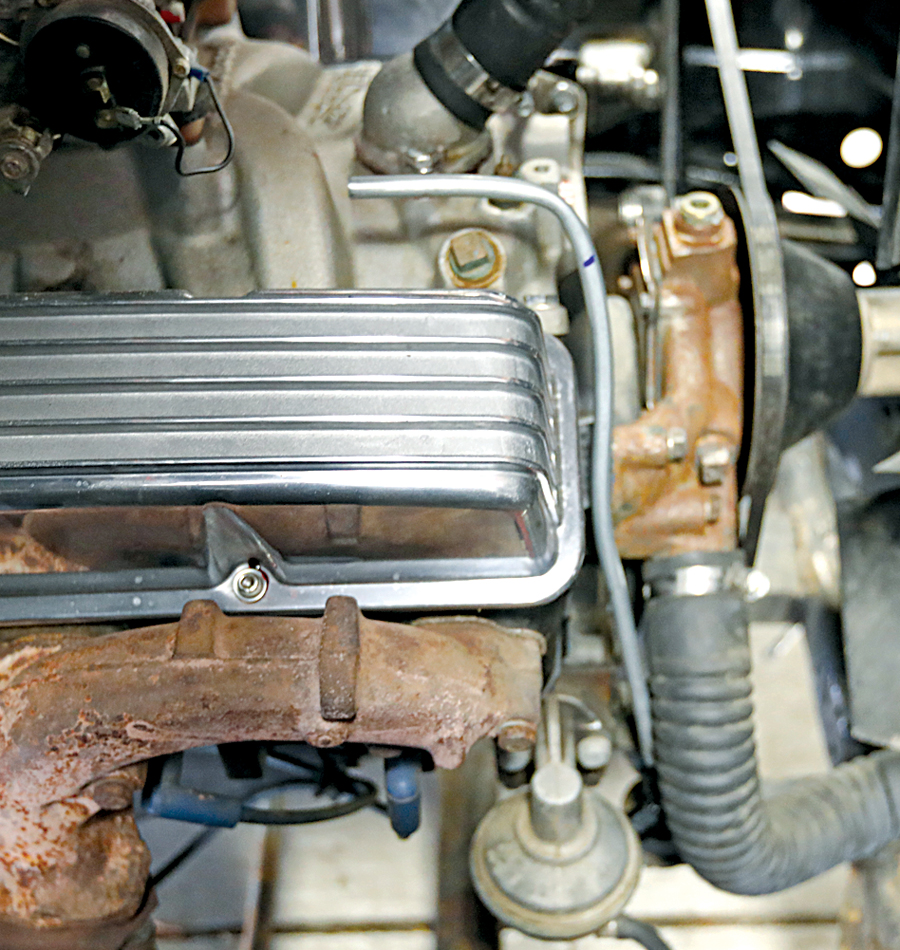
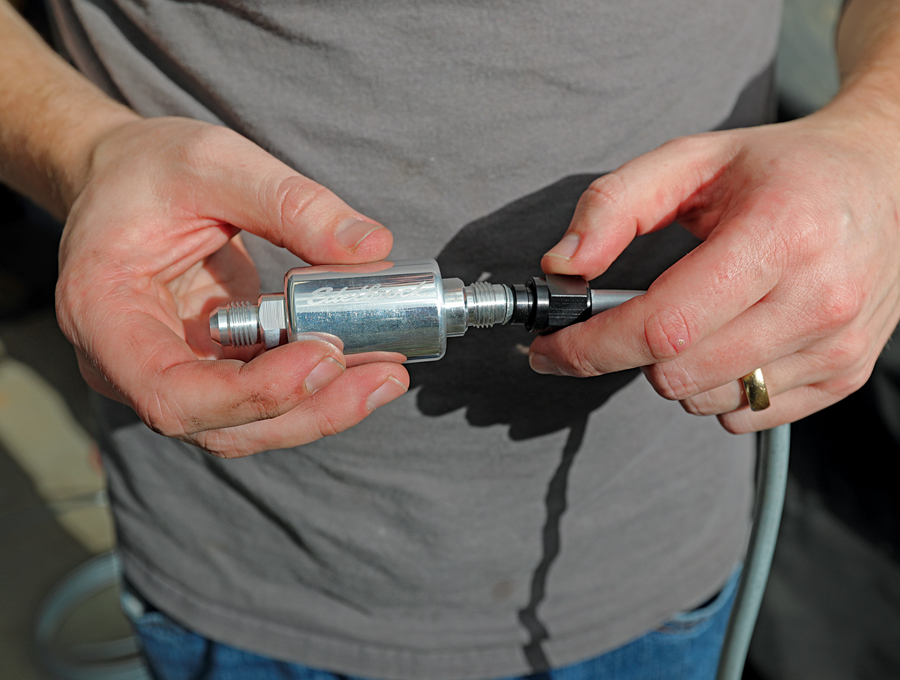
- After installing the tube nut and sleeve, we used the 377 flare tool again to complete this section of line and then installed the filter.
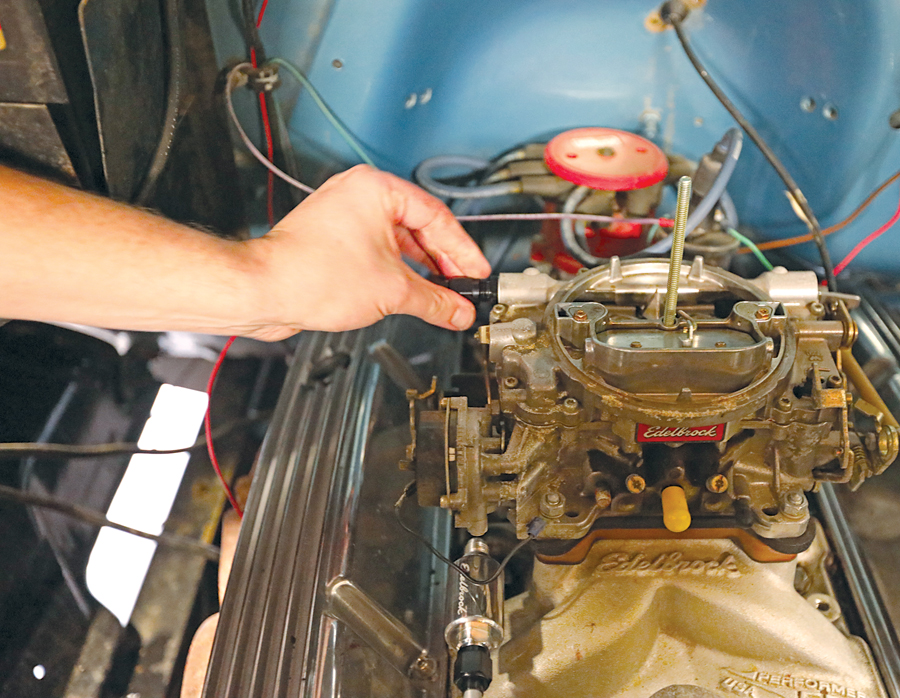
- With the lower section of line to the filter complete, we moved on to the filter-to-carburetor section, starting with a 90-degree bend at the carburetor inlet, pointing down toward the manifold to help keep the line tucked up and out of the way of the air cleaner.
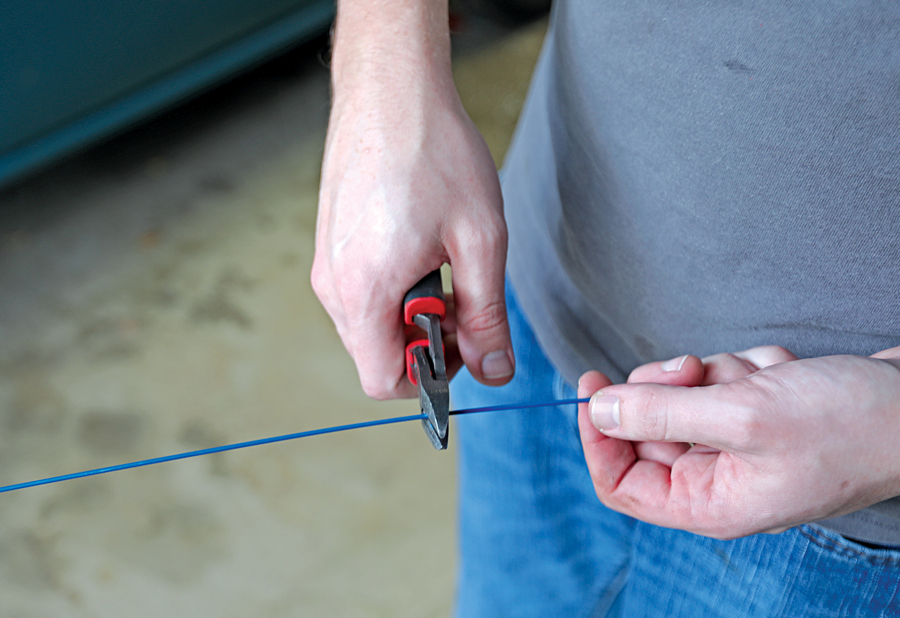
- Using a bit of wire from a coat hanger, we mocked up the bend and length of the final section of line, and then used it as a template to fab up a steel line to match.
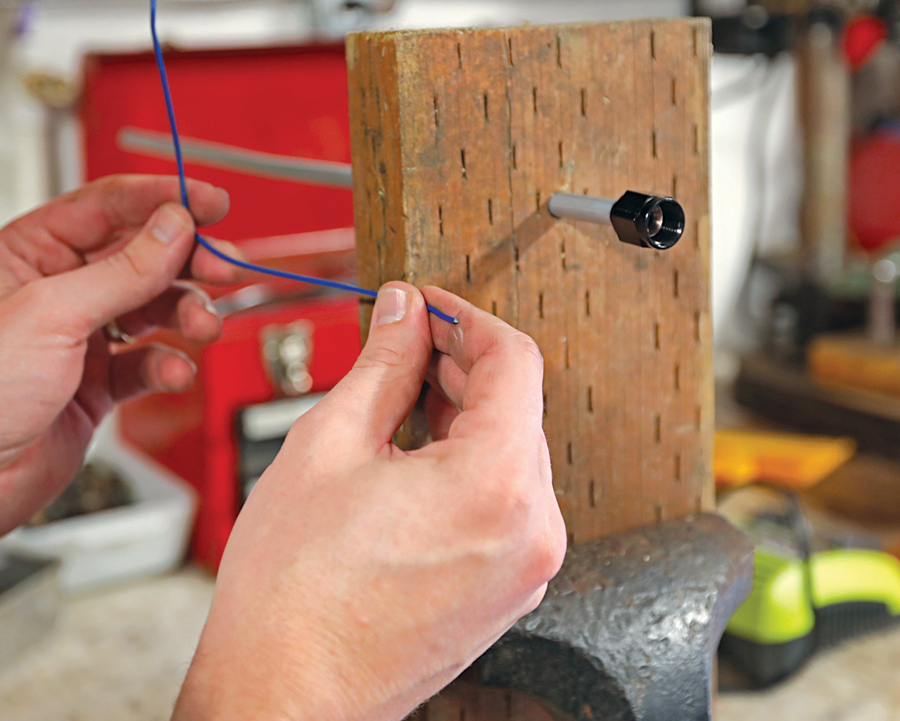
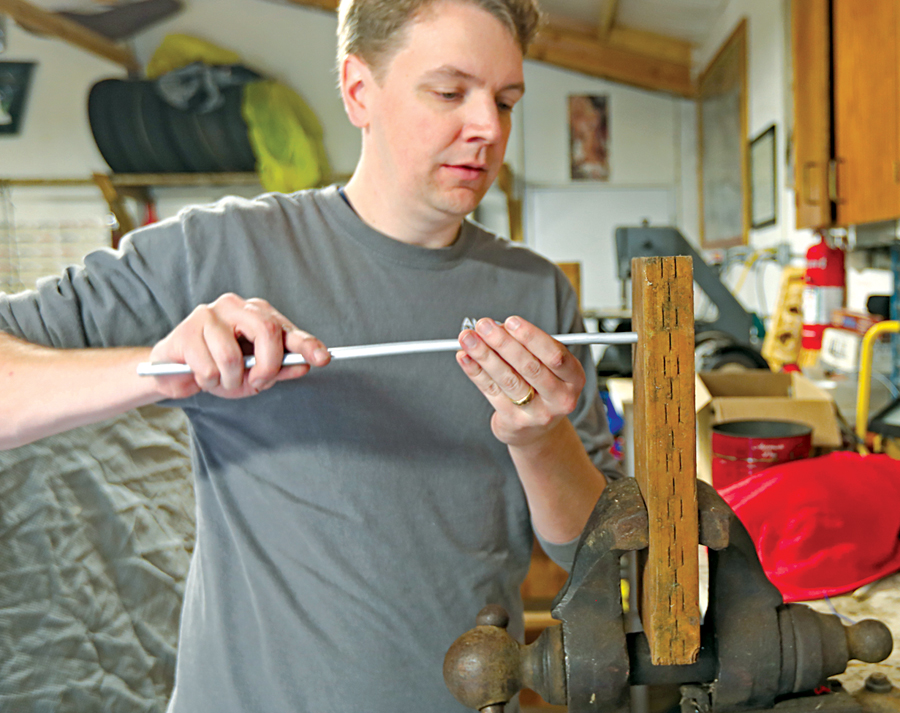
- Using the board method, we fabbed up a soft 90-degree bend, then flared one side and mocked it up in the truck to make sure it fit before the final cut and flare.
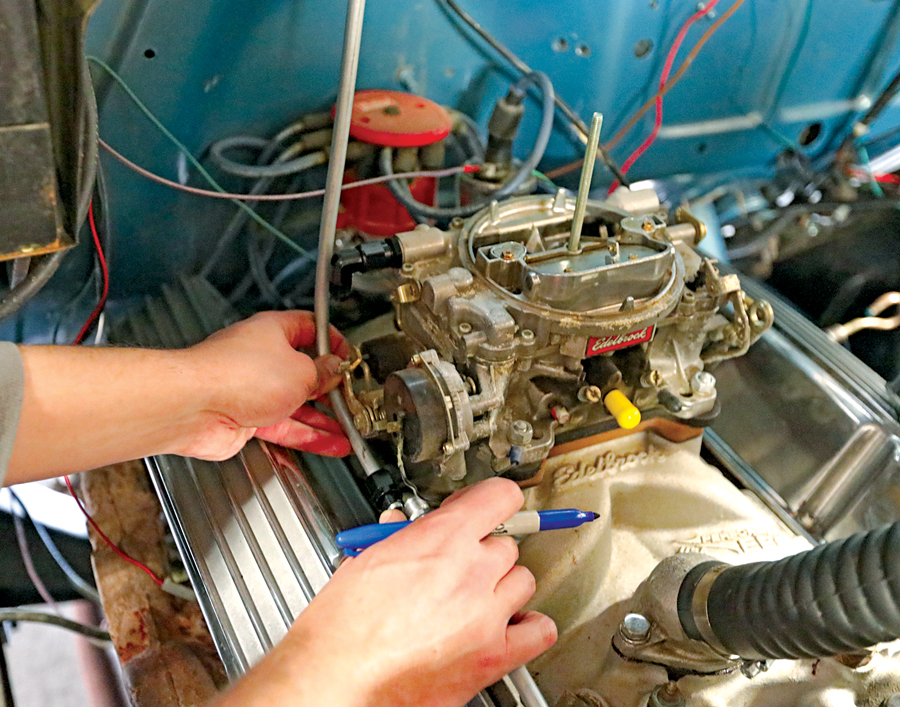
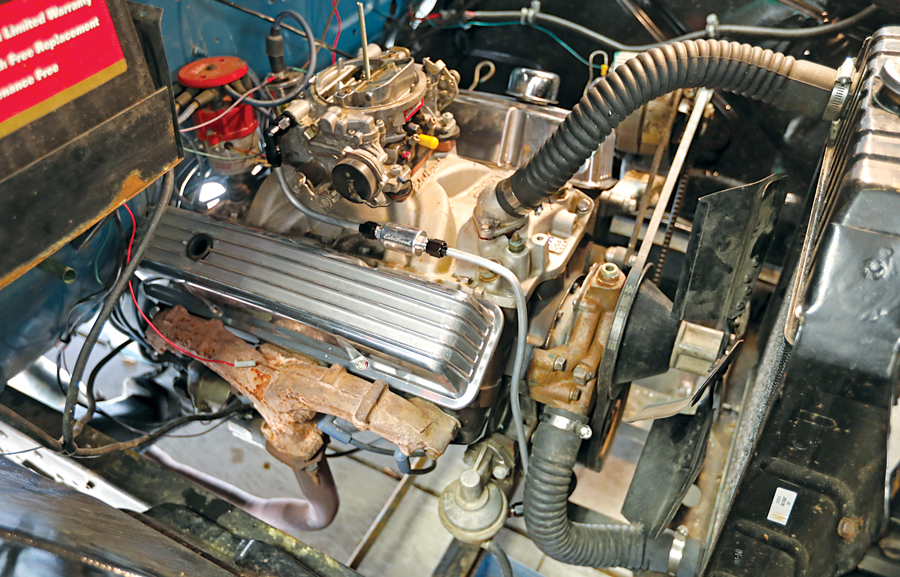
- Here’s our final piece, with all flares completed and all fittings snugged down. A quick drop of motor oil on all AN fittings will assist in assembly, and they don’t need to be ultra tight in order to work. After running the truck and checking for leaks, we were done. Now there’s no chance of degraded rubber or plastic filters causing a fire, which is cheap insurance for those of us who love to drive our cars.